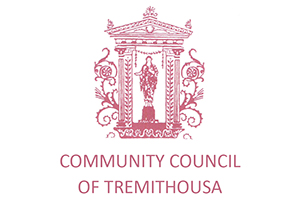The old church of the village that was dedicated to Riginos and Orestis, two foreign saints -which were however reported as having lead an ascetic life in Cyprus and are celebrated together on the 20th of August -was located a bit outside of the village, to the east and near a river. The church got destroyed and collapsed with the earthquake that occurred in 1953. Indeed, there is a tradition reporting that, a bit further from this church, there was a bridge with a cave right beneath it, which had stalactites in its interior. Water was springing from that spot. During their tour of Cyprus for the purpose of preaching Christianity, the two saints hid in that cave and remained there for two-three days after being persecuted. This place is considered as a holy one and many are the faithful that seek to be healed by washing their hands and face with the miraculous water of this cave, the two saints also being known as miracle makers with regards to having fever and shivering. The cave is extant today although it is deserted.
In 1963 the new church of the Saints Riginos and Orestis started being built. The church was completed and baptised in 1965 in a location at the centre of the village and a bit further from the church of St George. Amidst the houses of the village, it is made of stone and has a semicircular roof that is covered with tiles. The steeple is a simple structure adjacent to the rest of the building, it is not very tall, and it has two bells. It can accommodate 100-150 Christians. Internally, the icon screen is made as a mosaic (intarsia) and it is completed by the embedded holy icons. The Psalters are wooden -an old making -as is the High Priest’s throne. There is no women’s loft but the holy icon dedicated to the saints (18th century) is placed on a special, sealed kneeling desk to the left of the icon screen and towards the corner. A liturgy takes place in it once or twice a month. The day of the two saints is celebrated jointly on the 20th of August, their holy icon being carried about in procession.







